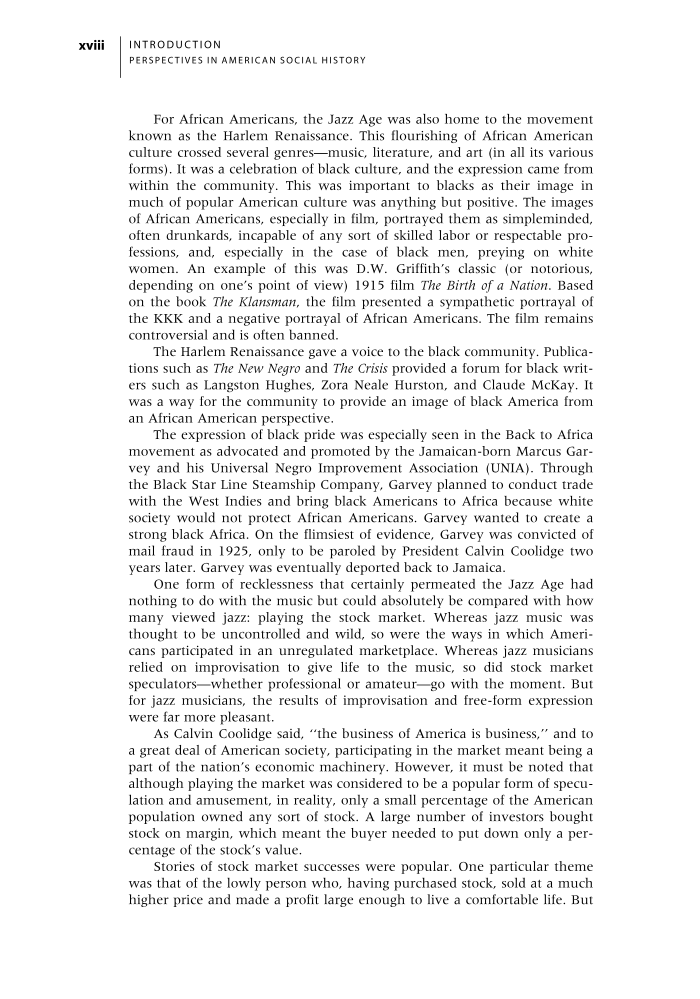For African Americans, the Jazz Age was also home to the movement known as the Harlem Renaissance. This flourishing of African American culture crossed several genres—music, literature, and art (in all its various forms). It was a celebration of black culture, and the expression came from within the community. This was important to blacks as their image in much of popular American culture was anything but positive. The images of African Americans, especially in film, portrayed them as simpleminded, often drunkards, incapable of any sort of skilled labor or respectable pro- fessions, and, especially in the case of black men, preying on white women. An example of this was D.W. Griffith’s classic (or notorious, depending on one’s point of view) 1915 film The Birth of a Nation. Based on the book The Klansman, the film presented a sympathetic portrayal of the KKK and a negative portrayal of African Americans. The film remains controversial and is often banned. The Harlem Renaissance gave a voice to the black community. Publica- tions such as The New Negro and The Crisis provided a forum for black writ- ers such as Langston Hughes, Zora Neale Hurston, and Claude McKay. It was a way for the community to provide an image of black America from an African American perspective. The expression of black pride was especially seen in the Back to Africa movement as advocated and promoted by the Jamaican-born Marcus Gar- vey and his Universal Negro Improvement Association (UNIA). Through the Black Star Line Steamship Company, Garvey planned to conduct trade with the West Indies and bring black Americans to Africa because white society would not protect African Americans. Garvey wanted to create a strong black Africa. On the flimsiest of evidence, Garvey was convicted of mail fraud in 1925, only to be paroled by President Calvin Coolidge two years later. Garvey was eventually deported back to Jamaica. One form of recklessness that certainly permeated the Jazz Age had nothing to do with the music but could absolutely be compared with how many viewed jazz: playing the stock market. Whereas jazz music was thought to be uncontrolled and wild, so were the ways in which Ameri- cans participated in an unregulated marketplace. Whereas jazz musicians relied on improvisation to give life to the music, so did stock market speculators—whether professional or amateur—go with the moment. But for jazz musicians, the results of improvisation and free-form expression were far more pleasant. As Calvin Coolidge said, ‘‘the business of America is business,’’ and to a great deal of American society, participating in the market meant being a part of the nation’s economic machinery. However, it must be noted that although playing the market was considered to be a popular form of specu- lation and amusement, in reality, only a small percentage of the American population owned any sort of stock. A large number of investors bought stock on margin, which meant the buyer needed to put down only a per- centage of the stock’s value. Stories of stock market successes were popular. One particular theme was that of the lowly person who, having purchased stock, sold at a much higher price and made a profit large enough to live a comfortable life. But xviii I N T R O D U C T I O N P E R S P E C T I V E S I N A M E R I C A N S O C I A L H I S T O R Y
Document Details My Account Print multiple pages
Print
You have printed 0 times in the last 24 hours.
Your print count will reset on at .
You may print 0 more time(s) before then.
You may print a maximum of 0 pages at a time.









































































































































































































































































































